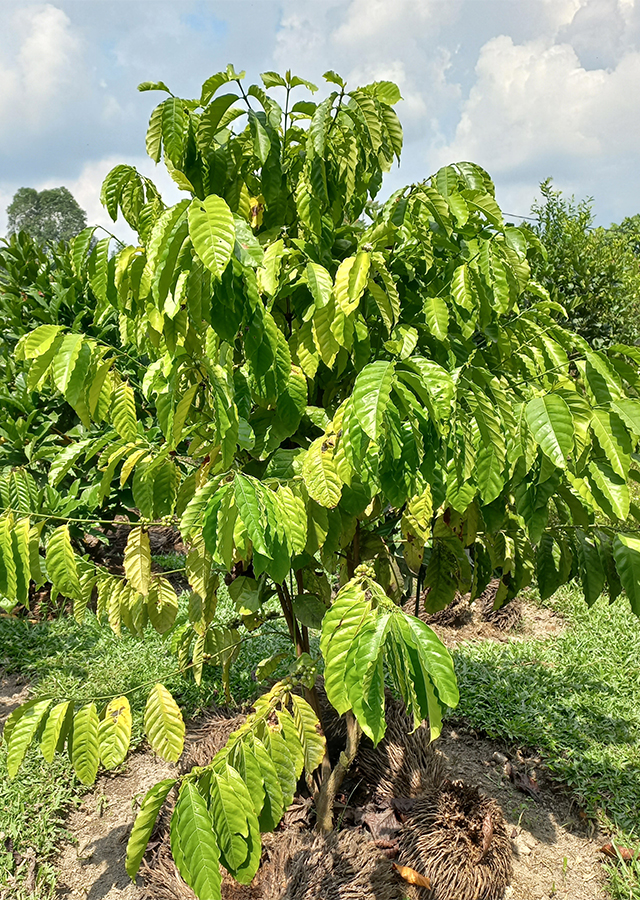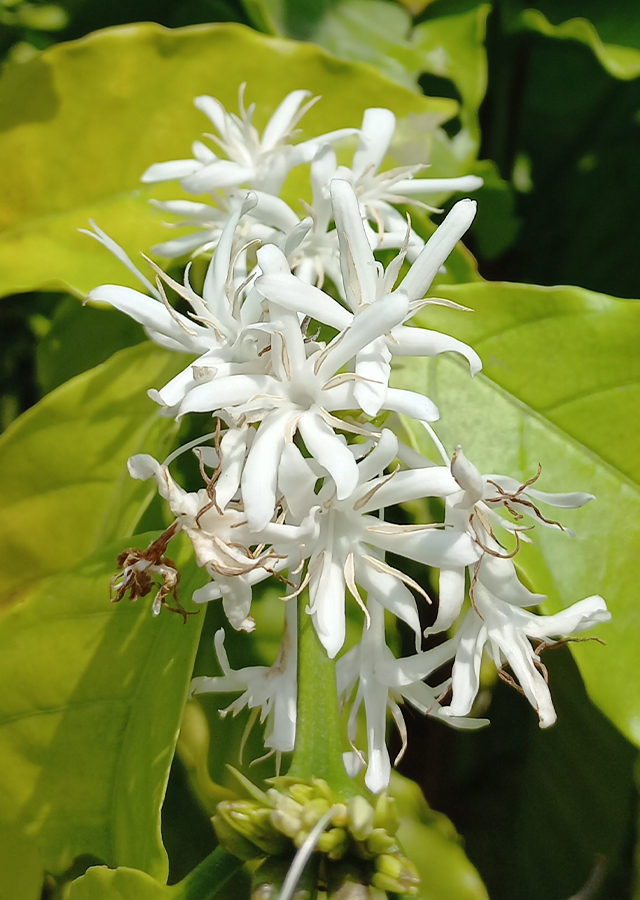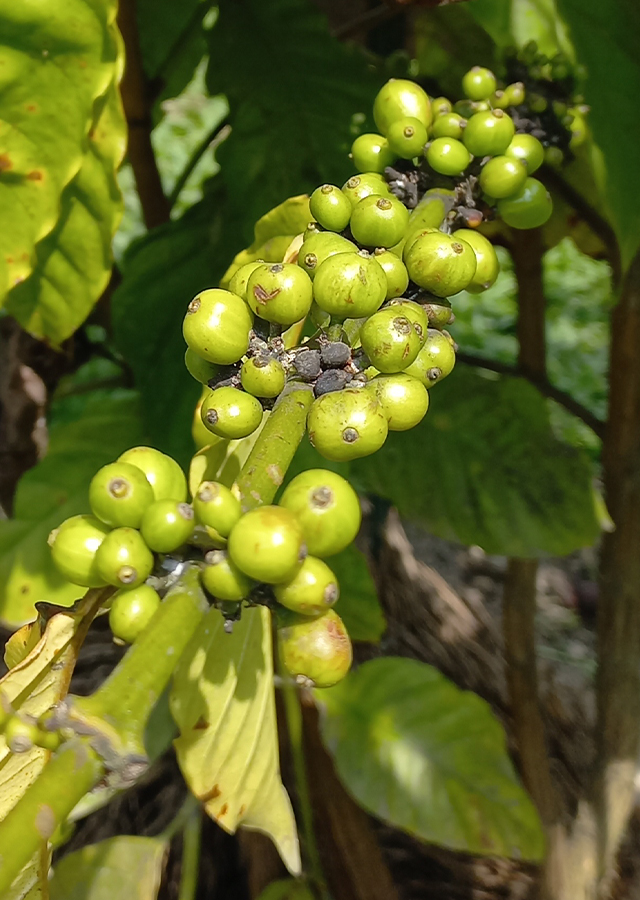Excelsa Coffee
Coffea liberica var. dewevrei (De Wild. & T.Durand) Lebrun
Rubiaceae
Location in our garden
Orchard



Synonym
Coffea arnoldiana De Wild.
Coffea excelsa A.Chev.
Coffea aruwimiensis De Wild.
Habitus
Shrubs. An evergreen perennial shrub or tree, growing 5 m tall
Part Used
Seeds
Growing Requirements
Full Sunshine
Drought Resistant
Habitat
Forest
Terrestrial
Overview
Coffea liberica var. dewevrei (excelsa coffee) is native to West Africa. This variant is one of the rarest types of coffee in the world. It was only discovered in 1904. Although Coffea species are native to Africa (including Madagascar), commercial plantations of coffee are now grown in many tropical countries around the world. However, most of the world's export coffee is produced by only a handful of countries, these usually include Brazil, Colombia, Indonesia and Côte d'Ivoire. In 1988, these four countries were responsible for over half of the total coffee export market. Growing mainly in South-East Asia, where it is used as a blending coffee. The taste of excelsa coffee, which originates from a botanical variety of this species, is less bitter than that of true Liberian coffee.
Vernacular Names
No found data on this. Need further research.
Agroecology
Found in lowland to lower montane rain forest, gallery forest, forest margins and even in open scrub vegetation, at elevations up to 600-1,300 m. Grows best in areas where annual daytime temperatures are within the range 24-30 °C, but can tolerate 18-36 °C. It can be killed by temperatures of 5 °C or lower. It prefers a mean annual rainfall in the range 1,600-2,400 mm, but tolerates 1,100-3,500 mm. Plants grow best under light shade, on well-drained clayey to sandy soils, although it is generally grown in full sunlight in Malaysia. Plants are tolerant of acid and poor soils, they have been known to grow successfully on alluvial muck soils with a pH of about 4.0. Prefers a pH in the range 5.3-6.2, tolerating 4.3-8. Established plants are drought tolerant. Plants are intolerant of waterlogged soils.
Morphology
- Leaves - has 15.2 to 24 cm long and 17.3 to 24 cm wide. The leaves are rounded with a blunt tip and a tapered base, flat wavy margin.
- Stem - primary branch and variably in number, 3-12 branchlets.
- Fruit - 2.9 to 3.5 cm, 1.9 to 2.1 cm in diameter.
- Seed - 2.1 to 2.3 cm, diameter 1.6 to 1.8 cm.
Cultivation
Generatively propagated by seed.
Chemical Constituents
Caffein, chlorogenic acid, phenolics.
Traditional Medicinal Uses
- It is used as stimulant and tonic.
- It is used to treat fever.
Part Used
Reference Sources
- Fern, Ken. (2021). Useful Tropical Plants: Coffea liberica Bull. ex Hiern. http://tropical.theferns.info/viewtropical.php?id=Coffea+liberica. 06-01-2022.
- Kew Royal Botanical GTheardens. (2017). Plants of the Word Online: Coffea liberica var. dewevrei (De Wild. & T.Durand) Lebrun. https://powo.science.kew.org/taxon/urn:lsid:ipni.org:names:77189827-1. 06-01-2022.
- Gibson, Mark, and Newsham, Pat. (2018). Coffea liberica. https://www.sciencedirect.com/topics/agricultural-and-biological-sciences/coffea-liberica. 06-01-2022.
- Top Tropicals. (2022). Coffea dewevrei, Coffea liberica var. dewevrei, Coffea excelsa. https://toptropicals.com/catalog/uid/Coffea_dewevrei.htm. 06-01-2022.
